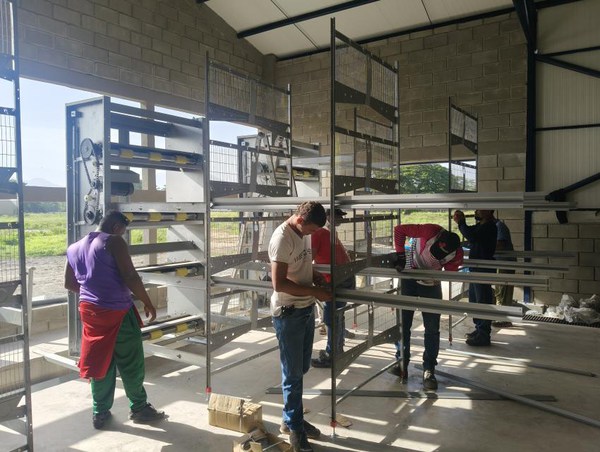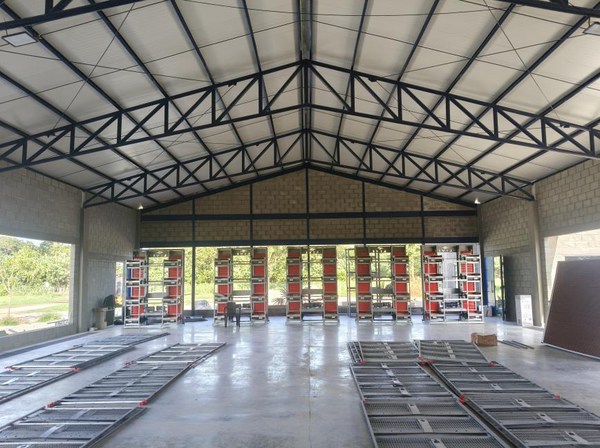When planning to expand egg production on a commercial scale, one of the most common questions farmers ask is: How much does a 50,000 layers battery cage poultry system cost? Since every farm has different needs, the cost depends on factors like cage type, automation level, materials, and infrastructure. To make things clearer, we’ve prepared this FAQ-style guide to answer the most common questions buyers have before investing.

What Is a Battery Cage Poultry System?
A battery cage system is a housing solution where laying hens are kept in rows and tiers of cages. It integrates automatic feeding, drinking, egg collection, and manure removal. For a 50,000 layer farm, this system ensures efficient space use, high productivity, and lower labor costs compared to deep litter or free-range systems.
How Much Does a 50,000 Layers Battery Cage System Cost?
The cost of a 50,000 layers battery cage poultry system typically ranges between:
-
Semi-automatic system: $40,000 – $60,000 (USD)
-
Fully automatic system: $60,000 – $100,000 (USD)
This price range depends on supplier, design type, material quality, and regional shipping or import duties. Keep in mind, this figure often covers equipment only and excludes poultry house construction and land costs.
What Factors Influence the Price?
-
Cage Type
-
A-Type Cages: 3–4 tiers, cheaper but require more land area.
-
H-Type Cages: 3–8 tiers, more compact and higher capacity, but usually more expensive.
-
-
Level of Automation
-
Semi-automatic systems need more labor.
-
Fully automatic systems include feed carts, egg conveyors, and manure belts, saving long-term costs.
-
-
Material Quality
-
Galvanized steel or PVC-coated wire is more durable and corrosion-resistant, though more expensive upfront.
-
-
Infrastructure Requirements
-
Ventilation, lighting, and power systems add to the total cost.
-
-
Supplier & Location
-
Prices vary by manufacturer. Asian suppliers often offer more competitive rates, while costs in Europe and North America are higher due to stricter regulations.
-

Is It Worth the Investment?
Yes. For 50,000 layers, average egg production rates of 85–95% can generate:
-
Daily output: 42,500 – 47,500 eggs
-
Monthly output: ~1.3 – 1.4 million eggs
At typical market prices, farmers often recover their investment in 1–3 years, depending on feed costs and market demand.
What Are the Benefits of a 50,000 Layers Battery Cage System?
-
Efficient land use with vertical stacking.
-
Labor savings through automation.
-
Higher egg quality with clean, damage-free collection.
-
Better flock health thanks to manure removal and improved ventilation.
-
Sustainable waste use as manure can be recycled into organic fertilizer.

How Do I Choose the Right Supplier?
When buying a 50,000 layers battery cage poultry system, always check:
-
Experience and reputation of the manufacturer.
-
Quality certifications and durability of materials.
-
Availability of installation, training, and after-sales service.
-
Ability to provide customized designs for your poultry house layout.
Why Consider LIVI Poultry Equipment?
LIVI Poultry Equipment is a trusted manufacturer with years of experience supplying battery cage systems for 50,000 layers and more. They provide:
-
High-quality galvanized steel cages.
-
Full automation options for feeding, egg collection, and manure handling.
-
Custom solutions based on farm size and climate conditions.
-
Professional installation and after-sales support.
Final Thoughts
So, how much does a 50,000 layers battery cage poultry system cost? On average, between $200,000 and $500,000 USD, depending on type, automation, and region. While the initial investment is significant, the long-term benefits—higher egg production, labor efficiency, and sustainable farming—make it a profitable choice for commercial poultry farms.
By choosing a reliable supplier like LIVI Poultry Equipment, farmers can ensure their investment leads to long-term productivity and success.
